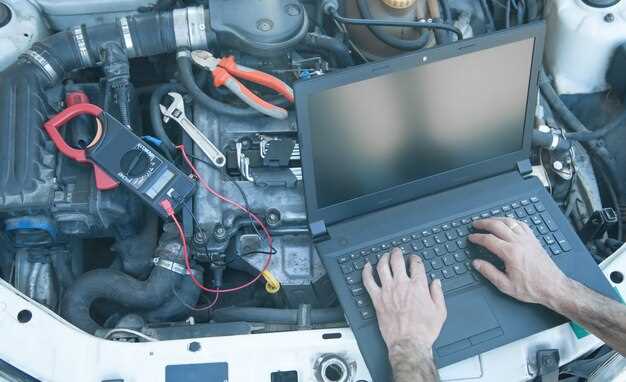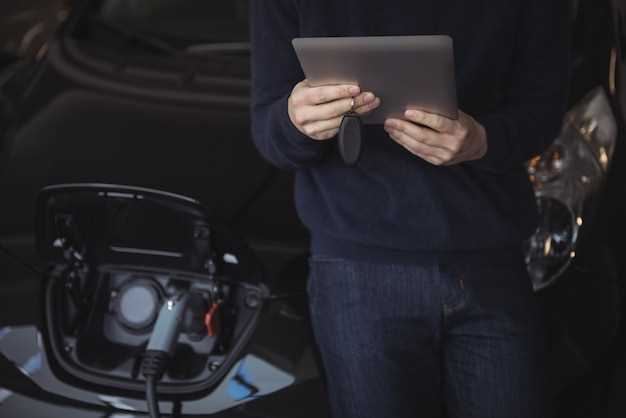Common Audi Electrical Problems and Solutions

Audi vehicles are renowned for their advanced engineering and cutting-edge technology. However, like any sophisticated machinery, they are not immune to electrical issues that can arise over time. Understanding these issues is essential for maintaining the optimal performance and reliability of your Audi. From faulty wiring to malfunctioning sensors, identifying and addressing these electrical faults can save you time, money, and frustration in the long run.
Common electrical issues in Audi models often manifest through warning lights on the dashboard, erratic behavior of electrical components, or even complete battery failures. These problems can stem from a variety of sources, including wear and tear, environmental factors, or manufacturing defects. Recognizing the signs early can lead to swift interventions, ensuring that your vehicle operates smoothly and safely.
This article will explore the most prevalent electrical issues faced by Audi owners, detailing the symptoms to watch for, potential causes, and practical solutions. By arming yourself with this knowledge, you can tackle electrical problems head-on, enhancing your Audi’s performance and extending its lifespan.
Common Wiring Problems in Audi Models
Audi vehicles, like many modern cars, rely heavily on complex electrical systems. While these systems enhance functionality and convenience, they can also present various wiring issues. Below are some common wiring problems associated with Audi models:
- Corroded Connectors: Over time, moisture can lead to corrosion on electrical connectors. This may cause poor connections, resulting in intermittent electrical failures or system malfunctions.
- Frayed Wires: Repeated movement and temperature fluctuations can cause insulation to wear off. Frayed wires can lead to short circuits or open circuits, affecting the performance of electrical components.
- Loose Connections: Vibration from driving may result in loose wiring connections. Symptoms may include flickering lights, non-functioning components, or complete system failures.
- Faulty Grounding: An improper ground connection can lead to erratic behavior in the electrical system. Symptoms may include dashboard warning lights or non-responsive electronic features.
- Damaged Wiring Harness: Accidental damage during repairs, or interference from moving parts can compromise the integrity of the wiring harness. This may result in multiple electrical issues throughout the vehicle.
Addressing these wiring problems requires careful diagnosis and repair. Here are some recommended steps:
- Visual Inspection: Regularly inspect wiring and connectors for any signs of wear, corrosion, or damage.
- Use Quality Tools: Employ proper tools for electrical repairs to ensure safe and effective connections.
- Repair or Replace: Address damaged sections immediately. This could involve repairing frayed wires or replacing corroded connectors.
- Test Electrical Components: After repairs, test the components to ensure they function correctly and resolve any issues.
- Professional Help: If problems persist, consider consulting a qualified technician who specializes in Audi electrical systems.
By understanding common wiring issues and taking proactive measures, Audi owners can maintain optimal electrical performance and avoid unnecessary complications.
Troubleshooting Audi Electrical System Failures
Troubleshooting electrical issues in your Audi can be a daunting task, but identifying the symptoms and applying systematic approaches can yield successful results. Common electrical system failures include issues with the battery, alternator, fuse box, and wiring. Each component plays a crucial role in the vehicle’s electrical functionality.
Start by identifying the specific electrical symptoms your Audi is experiencing. For instance, dim headlights may indicate a battery issue, while non-functioning dashboard lights might signal a blown fuse. Keeping a detailed record of the symptoms can help in diagnosing the problem more effectively.
| Issue | Possible Cause | Troubleshooting Steps |
|---|---|---|
| Dimming headlights | Weak battery or faulty alternator |
|
| Non-functioning dashboard lights | Blown fuse |
|
| Electrical shorts | Damaged wiring |
|
| Accessory issues (radio, lights) | Faulty connections |
|
Once you have identified any faulty components, replacing them is crucial. Ensure that you are using OEM parts to avoid future complications. If issues persist or are beyond your capability, seeking professional assistance is recommended to ensure the electrical system is restored to optimal condition.
Identifying and Repairing Faulty Sensors in Audi Vehicles
Faulty sensors can lead to significant electrical issues in Audi vehicles, affecting performance and safety. Identifying these issues early can save time and repair costs. The first step in diagnosing a sensor problem involves checking for any warning lights on the dashboard, which often indicate a sensor failure.
Common Symptoms
Drivers may notice unusual behavior such as erratic engine performance, decreased fuel efficiency, or malfunctioning stability control systems. These symptoms often point to faulty sensors, which may stem from poor wiring connections or damaged components.
Inspection Process
Begin by visually inspecting the wiring associated with the affected sensors. Look for frayed wires, loose connections, or any signs of corrosion. Proper wiring is crucial as damaged or exposed wiring can lead to erroneous readings and further complications.
Using an OBD-II scanner can provide valuable insight into sensor issues. This tool reads diagnostic trouble codes (DTCs) that can help pinpoint the faulty sensor. Once identified, further testing with a multimeter can measure voltage and resistance levels to confirm whether a sensor is working properly.
Repairing Faulty Sensors
If a sensor is determined to be faulty, replacement is often the best solution. Ensure that you purchase OEM (Original Equipment Manufacturer) parts for compatibility and reliability. To replace the sensor, disconnect the battery to prevent any electrical issues, then carefully remove the damaged sensor from its housing and replace it with the new unit.
After installation, inspect the wiring again to ensure that all connections are secure. Reconnect the battery and clear any DTCs using the OBD-II scanner. A road test will help confirm that the issue has been resolved and that the vehicle is functioning optimally.
In summary, addressing faulty sensors in Audi vehicles promptly by inspecting wiring, using diagnostic tools, and replacing defective components can help maintain the vehicle’s performance and reliability.
Understanding Audi’s Fuses and Their Replacement

Audi vehicles are known for their advanced electrical systems, which rely heavily on fuses to protect various components from power surges and short circuits. A blown fuse can result in a specific electrical issue, such as malfunctioning lights, failure of the central locking system, or inoperative infotainment features. Therefore, understanding the function of fuses and how to replace them is crucial for maintaining your Audi’s electrical system.
Fuses in Audi cars are typically located in the fuse box, which can be found in various locations depending on the model. Common locations include the dashboard, under the steering wheel, or in the engine compartment. It’s important to consult the owner’s manual for the exact location of the fuse box and the layout, as each fuse serves a different function.
When troubleshooting an electrical issue, start by checking the relevant fuses that correspond to the affected system. A visual inspection of the fuse might reveal a broken filament, which is a clear indication that it needs replacement. However, some fuses may appear intact but could still be faulty, so using a multimeter to test continuity can provide a definitive answer.
Replacing a fuse is a straightforward process. Begin by turning off the car and removing the key from the ignition for safety. Use a fuse puller or a pair of pliers to remove the faulty fuse from the fuse box. Make sure to replace it with a fuse of the same amperage rating, as indicated on the fuse box cover. Installing a fuse with a higher amperage can lead to wiring issues and potential damage to electronic components.
After replacing the fuse, check to see if the electrical issue has been resolved. If the new fuse blows shortly after installation, there may be an underlying wiring problem or a short circuit that needs professional diagnosis. Addressing these issues promptly can prevent further damage to your Audi’s electrical system.
Battery Drain Issues: Causes and Solutions for Audi Owners
Battery drain is a common issue faced by many Audi owners. Identifying the root causes and implementing effective solutions is crucial for maintaining your vehicle’s performance. Below are some common causes of battery drain and their corresponding solutions.
Common Causes of Battery Drain
- Electrical Accessories: Excessive usage of electrical systems such as lights, radios, and GPS devices when the engine is off can contribute to battery drain.
- Faulty Wiring: Damaged or worn-out wiring can result in continuous electrical draw, leading to battery depletion even when the vehicle is not in use.
- Parasitic Draw: Some components, like the alarm system or onboard computers, may continue to draw power even when the vehicle is off. This can cause a gradual drain on the battery.
- Battery Age: Older batteries typically lose their ability to hold a charge. If your battery is several years old, it may be time for a replacement.
- Temperature Extremes: Cold weather can reduce a battery’s efficiency, while high temperatures can accelerate corrosion and decrease lifespan.
Solutions to Battery Drain Issues
- Regular Maintenance: Schedule periodic inspections of the battery and electrical systems to catch potential issues early.
- Inspect Wiring: Check all wiring for signs of damage or fraying. If faulty wiring is found, it should be repaired or replaced to prevent unnecessary battery drain.
- Limit Accessory Use: Minimize the use of electrical accessories when the engine is off to prevent excessive battery drain.
- Battery Testing: Conduct a load test on your battery regularly to ensure it is in good working condition. If it fails the test, consider replacing the battery.
- Install a Battery Disconnect Switch: For those who do not drive their Audi frequently, a battery disconnect switch can help conserve battery life by cutting off the power draw.
By understanding the potential causes of battery drain and implementing these solutions, Audi owners can effectively maintain their vehicle’s battery life and overall electrical system function.
Upgrading Audi Wiring for Enhanced Performance

Upgrading the wiring in your Audi can significantly improve the electrical system’s overall performance and reliability. Modern vehicles rely heavily on complex electrical systems to provide power to various components, from infotainment systems to engine management. Therefore, ensuring high-quality wiring is essential for optimal functionality.
One of the key benefits of upgrading Audi wiring is the reduction of voltage drop. By replacing factory wiring with higher gauge wires, you can minimize resistance and ensure that electrical components receive adequate power. This is particularly important for upgrades involving performance parts that demand more power, such as aftermarket audio systems or enhanced lighting.
Installing premium materials, such as oxygen-free copper wiring, enhances conductivity and durability. Additionally, utilizing heat-resistant insulation can prevent deterioration caused by engine heat or harsh environmental conditions, extending the lifespan of your wiring system.
When considering an upgrade, it’s crucial to assess the entire electrical system. This includes checking the integrity of connectors, fuses, and ground points. Investing in high-quality connectors can improve signal strength and prevent issues related to poor connectivity. Clean and secure ground connections are equally vital, as they play a significant role in the performance of electrical systems.
Moreover, upgrading the wiring harness can simplify installation processes for new electrical accessories and reduce the risk of interference between components. A well-organized wiring system allows for easier troubleshooting and maintenance, making it easier to identify potential electrical issues.
In summary, upgrading the wiring in your Audi is a proactive step toward enhancing performance and reliability. By focusing on high-quality materials and ensuring a thorough assessment of the electrical system, you can achieve improved functionality and longevity for your vehicle’s electrical components.




